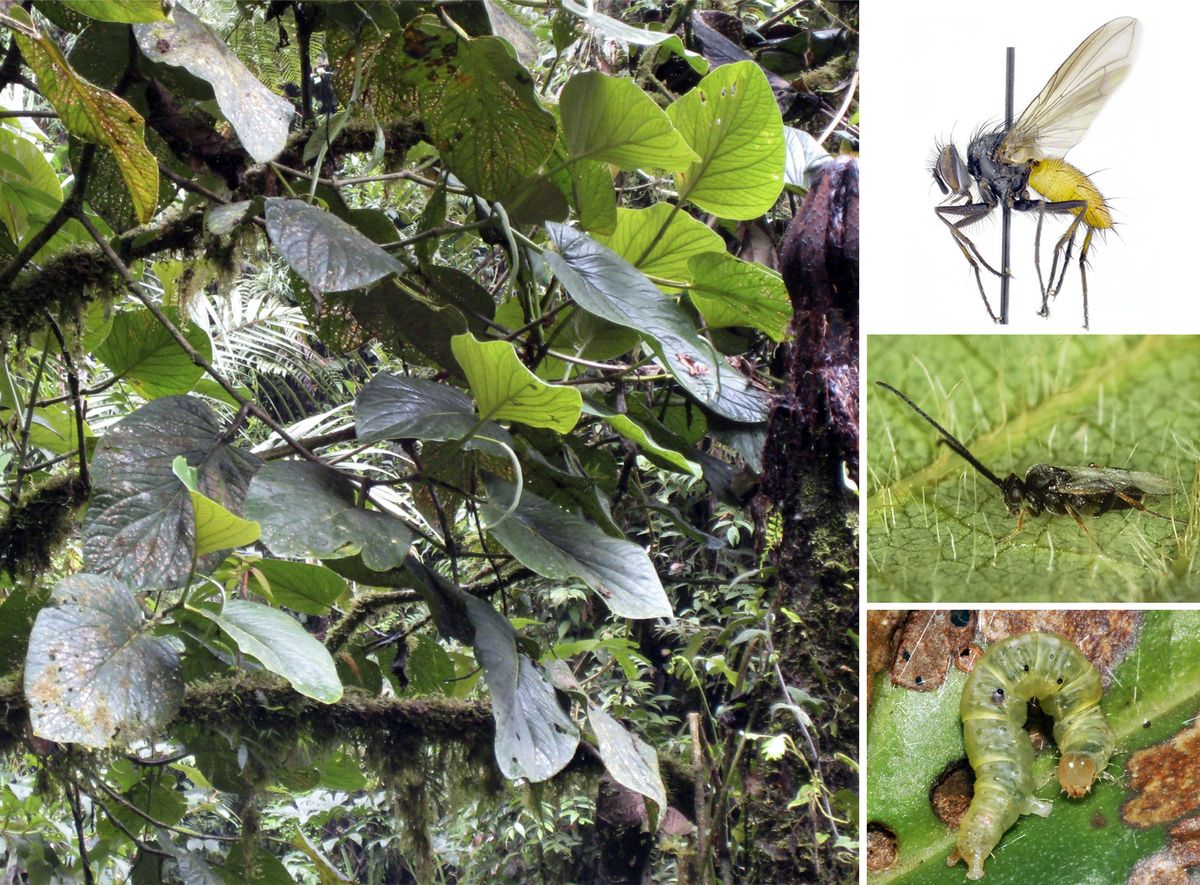Newly Discovered 'Pink Belly' Plant Teems with Insects

In the luscious, green forests of the Ecuadorian Andes, researchers have discovered a new plant species that turned out to be a biodiversity hotspot.
The plant, named Piper kelleyi, is a wild relative of black pepper, and is found in Ecuador and Peru. Living within the plant are about 40 to 50 insect species, both herbivores and predators.
"It seems like there are 11 caterpillar species that only eat this plant species," said study author Eric Tepe, associate curator and adjunct professor at the University of Cincinnati. Among the more than 100 species of the Piper genus surveyed by the study researchers, the new species sustains the largest number of insects that feed specifically on this plant.The researchers nicknamed the plant "pink belly" because of the color of its young stems and leaves.
"It is a beautiful plant, and it's really abundant when you find it," study author Lee Dyer, a professor at the University of Nevada, Reno, told Live Science. Certain photoactive chemical compounds in the plant are likely responsible for its pinkish hue, he said.
Although some of the chemical compounds in P. kelleyi may have anti-cancer properties, they are also distasteful or toxic to some herbivores, which therefore avoid eating the plant, the researchers said. "Plants can't move, so they defend themselves in other ways, and a major way is through these secondary compounds," Tepe said.
In fact, high doses of these compounds in the plant could potentially be toxic to humans, Dyer said.
But a certain caterpillar species called Eois has managed to overcome the toxicity, and now feeds only on P. kelleyi.
Sign up for the Live Science daily newsletter now
Get the world’s most fascinating discoveries delivered straight to your inbox.
"Caterpillars have this remarkable ability to develop molecular machinery to either detoxify or to tolerate these toxins that plants produce," Tepe said. "And, more remarkably, in some cases, they can sequester these compounds and use them for their own protection against predators. So they, in turn, become toxic to their predators," he said. [Blow It Out Your Sides: Caterpillars Can Whistle]
Dyer underscored the importance and joy of discovering and studying new plant and insect species. "Each of these caterpillars is like this amazing story that we haven't finished reading yet," he said.
But he also acknowledged the vulnerable future of biodiversity. "With global changes, we are trying to reveal all these stories before we lose too many of them," he said.
Some of the major threats to biodiversity in the Ecuadorian Andes and other diverse regions of the world include deforestation, climate change, habitat fragmentation, roads, invasive species and oil development, Dyer said.
The study was published in the journal PhytoKeys.
Follow Agata Blaszczak-Boxe on Twitter . Follow Live Science @livescience, Facebook & Google+. Original article on Live Science.












